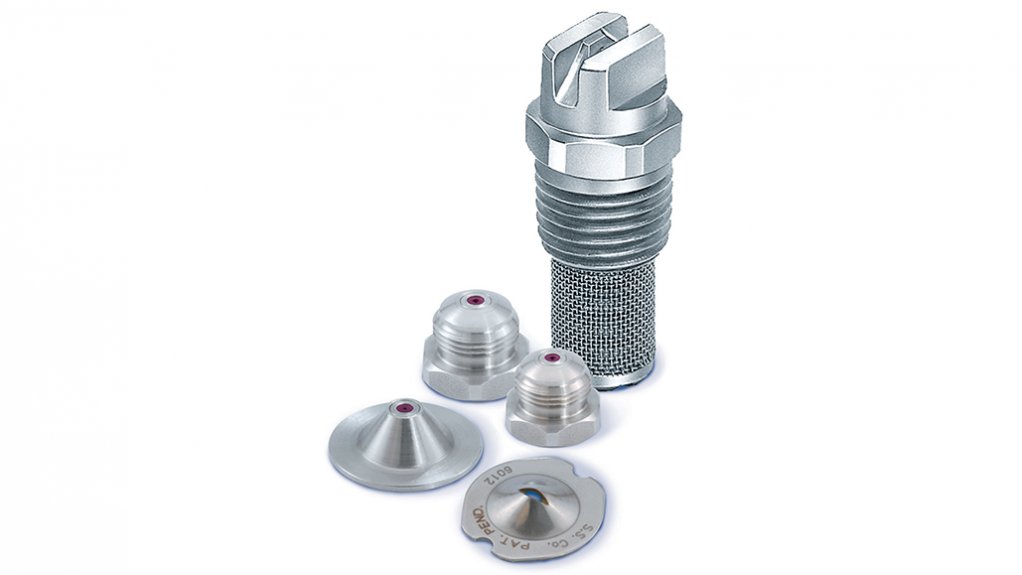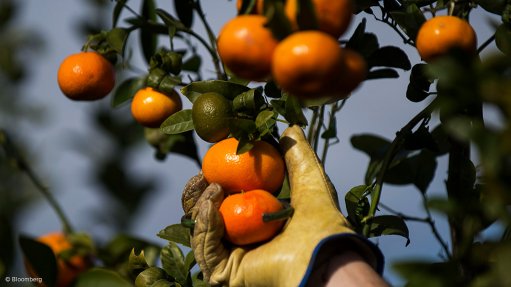Sustainability in Paper Plants - optimizing Spray Nozzle Performance
This article has been supplied as a media statement and is not written by Creamer Media. It may be available only for a limited time on this website.
Sustainability in paper plants with spray nozzles is a crucial aspect of the industry's efforts to minimize environmental impact and promote responsible resource management. By implementing sustainable practices and utilizing efficient spray nozzle systems, paper plants can achieve significant improvements in their sustainability performance.
One key area of focus is water conservation. Paper production requires a substantial amount of water, and spray nozzles play a vital role in controlling the water usage during various stages of the process.
The biggest issue on paper plants with regards water consumption is nozzle wear. Spray nozzles that are worn by just 10% cannot be seen by the naked eye, but are delivering significantly more water, or chemical than what is required.
WHY IT PAYS TO RIGHT-SIZE SPRAY NOZZLES
Making sure nozzles are sized properly for the operation sounds simple. But, many processors tend to use higher capacity nozzles than required. Right-sizing nozzles is a simple change that won’t disrupt operations but can deliver significant dividends.
STEP 1
KNOW THE FLOW
How much water flows through spray nozzles every day? Take a quick look at the math for a single nozzle below.
How much water for a single nozzle?
The flow rate of a full cone spray nozzle* is:
10.6 liters per minute at 1.5 bar
5,087 liters per day (based on eight hours per day)
25,438 liters per week (based on five days per week)
1,271,898 liters per year (based on 50 weeks per year)
* 3/8” H FullJet®
How much water for an entire operation?
Most paper plants use hundreds of nozzles in various operations including cleaning, coating, lubricating, moisturizing, cooling and more.
For this example, we’ll assume 150 nozzles are in use for a Cleaning operation.
1 271 898 liters used per year
x 150 nozzles
= 190 784 754 liters used per year
STEP 2
REDUCE THE FLOW
What if nozzles with a lower flow rate could be used in the same cleaning operation without compromising effectiveness? The chart below reveals what could happen.
RESULTS
47,696,188 liters saved per year simply by using a slightly smaller capacity nozzle — a 7.9 lpm full cone nozzle spraying at 1.5 bar
88,578,636 liters saved per year by using an even smaller capacity nozzle — a 4.9 lpm 1.5 bar
STEP 3
SUSTAINABLE SAVINGS
Sustainability assessment programs will help your operations become more efficient, productive, sustainable and safe. It happens on-site with no disruptions to production.To learn more, visit
spray.com/sustainability-assessment
Proper maintenance and regular inspection of spray nozzle systems are essential for sustainability in paper plants. Regular cleaning and replacement of nozzles ensure their optimal performance, preventing issues such as clogging or uneven spray distribution. This not only improves the quality of the final product but also reduces the need for rework or additional resources.
Another important aspect of sustainability in paper plants is the reduction of chemical usage. Spray nozzles are responsible for the application of various chemicals, such as coatings, dyes, and adhesives, onto the paper fibers. By utilizing precision spray nozzles, paper plants can achieve better control over the chemical application process, ensuring that only the required amount of chemicals is used. This not only minimizes waste but also reduces the release of potentially harmful substances into the environment
Comments
Press Office
Announcements
What's On
Subscribe to improve your user experience...
Option 1 (equivalent of R125 a month):
Receive a weekly copy of Creamer Media's Engineering News & Mining Weekly magazine
(print copy for those in South Africa and e-magazine for those outside of South Africa)
Receive daily email newsletters
Access to full search results
Access archive of magazine back copies
Access to Projects in Progress
Access to ONE Research Report of your choice in PDF format
Option 2 (equivalent of R375 a month):
All benefits from Option 1
PLUS
Access to Creamer Media's Research Channel Africa for ALL Research Reports, in PDF format, on various industrial and mining sectors
including Electricity; Water; Energy Transition; Hydrogen; Roads, Rail and Ports; Coal; Gold; Platinum; Battery Metals; etc.
Already a subscriber?
Forgotten your password?
Receive weekly copy of Creamer Media's Engineering News & Mining Weekly magazine (print copy for those in South Africa and e-magazine for those outside of South Africa)
➕
Recieve daily email newsletters
➕
Access to full search results
➕
Access archive of magazine back copies
➕
Access to Projects in Progress
➕
Access to ONE Research Report of your choice in PDF format
RESEARCH CHANNEL AFRICA
R4500 (equivalent of R375 a month)
SUBSCRIBEAll benefits from Option 1
➕
Access to Creamer Media's Research Channel Africa for ALL Research Reports on various industrial and mining sectors, in PDF format, including on:
Electricity
➕
Water
➕
Energy Transition
➕
Hydrogen
➕
Roads, Rail and Ports
➕
Coal
➕
Gold
➕
Platinum
➕
Battery Metals
➕
etc.
Receive all benefits from Option 1 or Option 2 delivered to numerous people at your company
➕
Multiple User names and Passwords for simultaneous log-ins
➕
Intranet integration access to all in your organisation




















